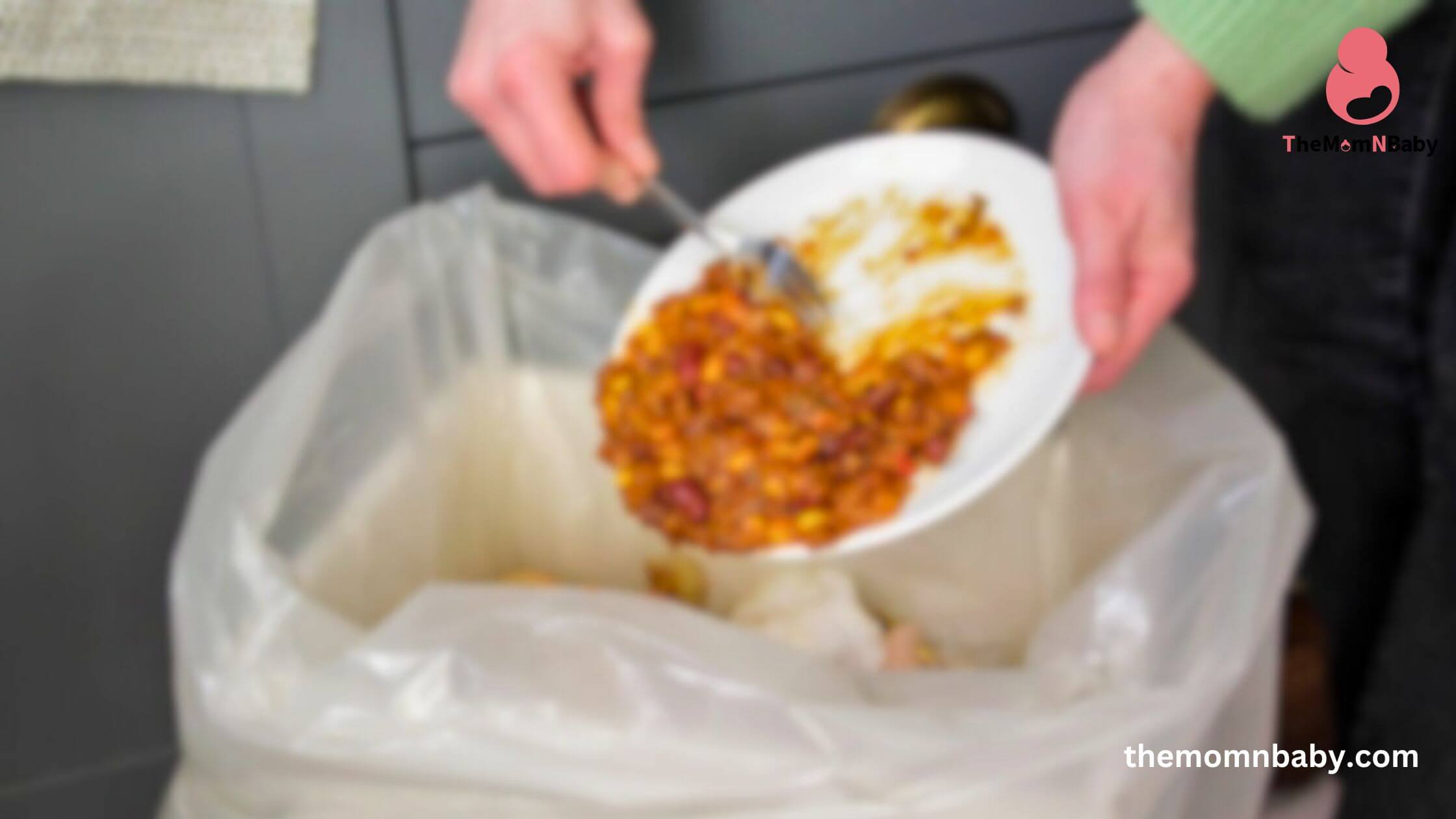
In India, like in many places, food waste is a big problem. Lots of food gets thrown away, which is not good for our wallets or the environment. But there’s a solution: zero-waste cooking! It means using every part of the ingredients and getting creative in the kitchen. Don’t throw those food scraps away – sauté leaves, make tea from leftover herbs, or create spice mixes from dehydrated peels. Let’s cook smarter and waste less to help our planet!
Zero or Reduce Waste in the Kitchen: Use Everything!
When cooking, try not to waste any part of the ingredient you’re using. Use all the edible parts from top to bottom, like the leaves, stems, and roots. There are cookbooks with great ideas on how to do this, like “Waste Not” and “Ruffage.”
Let’s look at an easy example: when you cook vegetables like spinach (palak) and fenugreek (methi), many people cut off the stem and only use the leaves. But did you know that you can actually eat the stems too? Don’t throw them away! Just chop them up and cook them in different tasty ways, like frying or adding them to soups. The same goes for fennel stalks and broccoli stems – they’re delicious if you roast, grill, or sauté them. You can even use those broccoli stems to make a yummy coleslaw. So, instead of wasting these parts, try using them in your cooking for some extra deliciousness!
So, instead of throwing away parts of your ingredients, get creative and use them all to make delicious and sustainable meals.
#1. Zero Waste Cooking: Embrace Every Bit of Flavor – USE STEMS !
In the spirit of zero waste cooking, let’s make the most of every part of the veggies! When you cook radishes, daikon, turnips, beets, and more, don’t forget about those leafy greens still attached. They’re full of goodness and should not be discarded!
You can enjoy them raw in salads or cook them up by sautéing in a pan. Want something extra exciting? Turn them into delicious dish! And here’s a smart tip: if a recipe calls for spinach, simply swap it with these greens for a tasty twist.
But wait, there’s more to this zero waste journey! Don’t let those slightly wilted salad greens go to waste. Instead, think beyond the salad bowl! You can create mouth-watering pesto, blend them into delightful juices, or stir-fry them with other yummy ingredients. This way, you’ll relish their amazing flavors and reduce food waste. It’s a win-win situation for your taste buds and the environment! 🌿🌱🍲
#2. Zero Waste Cooking: Utilize Every Bit of Goodness- USE GREENS !
When it comes to zero waste cooking, let’s make the most of every part of the veggies! Just like how greens add deliciousness, the leaves of vegetables are also packed with flavor. So, instead of throwing away those celery leaves, carrot tops, or fennel fronds, let’s get creative and use them to enhance our dishes.
Treat them just like parsley and add them to salads, soups, risotto, and more. And guess what? If you have carrot tops and parsley leaves, they can take your pesto to a whole new level of yumminess. Oh, and here’s a cool idea: infuse vodka with fennel fronds to enjoy the delightful taste of the whole plant.
With zero waste cooking, we can relish every bit of goodness nature provides and reduce unnecessary food waste. So, let’s embark on this sustainable and flavorful cooking journey together! 🌿🌱🍴
#3. Zero Waste Cooking: Embrace Every Bit of Flavor Including Seeds!
In the exciting world of zero waste cooking, we believe in making the most of every part of the veggies! Beyond the delectable greens and flavor-packed leaves, let’s not forget about the seeds.
When you’re cooking pumpkin or squash, hold on to those seeds! Give them a little roast until they reach perfection, and then get creative with them. Sprinkle them into sauces, toss them in salads, add them to baked goods, or even use them to enhance the sweetness of desserts. Their satisfying crunch will make your dishes even more delightful. And speaking of delightful, have you tried making pumpkin seed chocolate bark? It’s one of our absolute favorites!
By utilizing every edible part of the veggies, including the seeds, we can truly master the art of zero waste cooking. So, let’s embark on this sustainable and flavor-packed culinary journey, where every bit of goodness counts! 🌿🌱🍴
#4. Zero Waste Cooking: Use Peels and Reduce Waste!
When you see people peeling many fruits and veggies like carrots, potatoes, apples, and peaches, remember that it’s not always necessary. But if you prefer peeling your food and want to reduce waste, don’t worry – there’s a smart solution!
Before peeling, make sure to give your fruits or veggies a good scrub. Then, get creative with those peels! Turn potato peels into crispy chips, dry apple peels for a sweet snack, or chop up cucumber peels for tasty cucumber and yogurt sauce.
By using every part of the produce, including the peels, you’ll make your cooking journey more sustainable and flavorful! 🍎🥒🥔
#5. Zero Waste Cooking: Discover the Hidden Gems in the Ends!
In the world of zero waste cooking, let’s not overlook any opportunity to make the most of our ingredients! When you think you’ve used every edible part, there’s still one more use you might be missing out on!
Did you know that carrot tops can be repurposed as tasty treats for your furry friends? Many readers have discovered this wonderful way to reduce waste and treat their dogs with carrot tops. And speaking of hidden gems, don’t discard those sunflower seed husks! Instead of throwing them away, you can use them to add an extra burst of flavor to your soups or broth.
So, let’s embrace zero waste cooking and explore all the possibilities, even in the ends of our ingredients. It’s a delightful way to create tasty treats and elevate our dishes, all while minimizing waste! 🐶🍲🌿
Preservation : Minimizing Waste through Storage
In the journey of zero waste cooking, an essential aspect is preventing ingredients from going bad. But if you find yourself unable to cook them in time, don’t worry! Instead, focus on preservation techniques to extend their shelf life and reduce food waste.
#6. Embrace Your Freezer: A Food Waste Saver!
Here’s a brilliant food waste tip: Make your freezer your best friend! Freezing ingredients puts a halt to the ripening process and keeps them fresh for future use. There are so many ways you can use your freezer to your advantage:
- Freeze fruits and vegetables to enjoy them later.
- Store prepared foods for convenient meals in the future.
- Get creative by “cooking” frozen treats like banana or grape “popsicles.”
- Keep pesto or stock ready-to-go by storing them in ice cube trays for easy servings.
- Preserve blanched vegetables, milk, yogurt, and more for later use.
Your freezer can be a real lifesaver in preventing food waste and making your meals more convenient and enjoyable!
#7. Make Friends with the Dehydrator: Extend Shelf Life with Ease!
Discover the Dehydrator’s Magic: Fresh Food, Always! With a surplus of hot peppers, whip up homemade chili powder in a snap. And those extra apples? Turn them into delightful apple chips with ease.
No dehydrator? No problem! Your oven’s lowest setting works just as well.
Extend shelf life and savor tasty treats anytime by harnessing the power of dehydration!
#8. Learn the Art of Pickling!
Preserve and Flavor with Pickling! 🥒🍅🥚 Don’t limit pickling to just a few items – the possibilities are boundless! Try pickling eggs, chili peppers, delicate celery leaves, and even berries.
Start with an easy refrigerator pickle, keeping it fresh in the fridge for weeks. For extended enjoyment, use a water bath canner to make them shelf-stable.
Embrace pickling and relish the goodness of your favorites for the long haul!
#9. Savor the Sweetness: Making Jam!
Don’t let your ripe fruit or vegetables go to waste! Turning them into jam is a fantastic way to preserve their delicious flavors before they end up in the trash. Here are some easy recipes for refrigerator jams that you can try. But if you want to keep your jam preserved for a long time, consider using a water bath canning method. It’s a smart way to enjoy the delightful taste of your homemade jam for many months to come!
Embrace Zero Waste Cooking: Use Everything Throw Nothing!
In the world of zero waste cooking, the key is to avoid the trash can and find a purpose for every part of your ingredients. From onion peels to avocado seeds, there’s potential in everything – you just need to discover it. Let’s get creative and make the most of all our food, leaving nothing to waste! 🌿🍴♻️
#10. Create Stock and Puree: No Waste, All Taste!
Don’t let any food scraps go to waste! Instead, collect onion and garlic peels, herb stems, carrot tops, and other bits in a freezer bag. When the bag is full, make delicious stock. Just give the ingredients a quick wash to remove any dirt before adding them to the scrap bag. After making the stock, strain it to perfection.
For overripe fruit like bananas and berries, turn them into tasty puree. If you can’t use it right away, freeze it or make delightful fruit leather. With these simple techniques, you’ll make the most of your ingredients and leave nothing to waste! 🍲🍌🍓
#11. Reuse Edible Scraps: Infuse Flavor!
Reuse edible scraps for infusing the flavor. Don’t waste mushroom stems or apple peels. Instead, use them for flavorful infusions. Try corn silk tea and get creative with herbs, fruits, and veggies. Make infusions, tinctures, and extracts, like strawberry and citrus tops. After use, compost the scraps. 🍄🍏🍋🍓♻️
Reduce, Reuse, Recreate: The R’s of Zero Waste Cooking! 🌿🍴♻️
In the world of zero waste cooking, the “RRR” principles reign supreme. Embrace the mantra of Reduce, Reuse, and Recycle to create a sustainable culinary haven. Minimize food waste, find inventive ways to repurpose ingredients, and recycle kitchen resources. Embrace sustainability, savor the flavors, and make a positive impact on our planet, one recipe at a time! 🌎🌱🍲
Double the Use: Zero Waste Cooking!
To truly master zero waste cooking, don’t settle for just using something once – use it twice! Reusing spices, herbs, peels, and other ingredients to flavor or infuse maximizes their potential.
Make the most of citrus zest! After using it in a drink, rinse it off and reuse it to infuse vinegars, household cleaners, or olive oil for tasty marinades.
Apple peels and cores can also have a second life. Use them to infuse vinegar or liquor, then cook the cores into a flavorful mustard or use the peels as a handy pot cleaner.
When you’ve utilized your ingredients to the fullest, toss them into the compost bin. Proper composting ensures you’re doing your part to minimize waste. 🍋🍏🌿♻️
Remember the Non-Edible Parts in Your Zero Waste Cooking Approach!
While banana peels, egg shells, and citrus seeds may not typically find their way into the salad bowl, they can still play a crucial role in your zero waste cooking strategy. These seemingly non-edible parts can be put to good use in other ways.
Here are some ideas to consider:
- Banana peels work wonders as a natural remedy for bug bites, providing relief from itching and irritation.
- Instead of tossing egg shells, utilize them as an abrasive for scrubbing pots and pans, or crush them into nutrient-rich fertilizer for your soil.
- Don’t let dried out corn cobs go to waste; repurpose them as effective pot scrubbers or use them as a wood chip substitute while grilling.
- Get creative with leek greens’ tough outer tops, treat them as you would banana leaves, using them to wrap foods before cooking or steaming.
- Extract the potential of citrus seeds by making pectin, a useful ingredient in various culinary creations.
By incorporating these non-edible parts into your daily routine, you can minimize waste and make the most of your ingredients in an environmentally-friendly way.
Also Read : 11 Tips To Navigate Organic And Eco-Friendly Baby Food : Healthy Babies Healthy Planet





